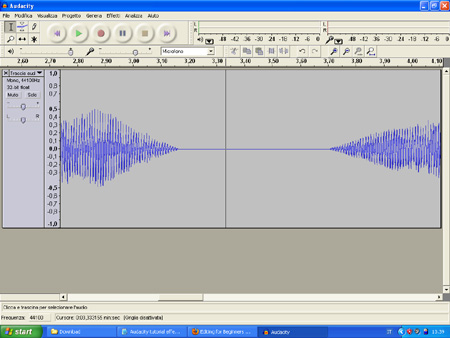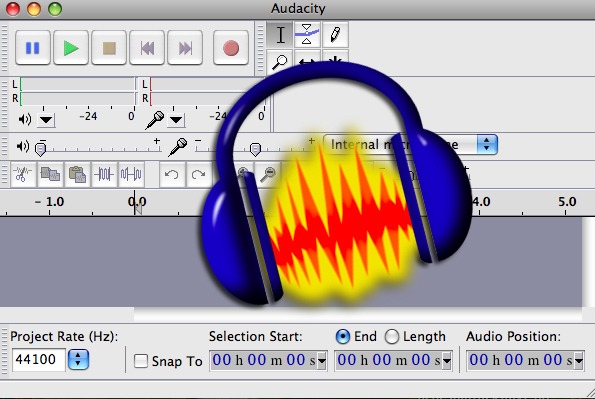

If you are going to stream your audio as a podcast or burn to CD, use these settings: In addition to quality and resolution, these settings also affect file size.
Audacity tutorials for mac#
For this workshop, we will be using version 2.0.4 for Mac which can be downloaded here: ġ) Click on Audacity in the upper lefthand corner, then select Preferences.ģ) Here you can select your “ Sample Rate” (measured in Hz) and your “ Sample Bit Format” (resolution). IntroductionĪudacity is a free digital audio editor and recording application that runs on Mac or PC.
Audacity tutorials pdf#
Its flexible workflow, combined with exceptional ease of use and precise tools, gives you the power to create rich, nuanced audio of the highest possible quality.Download this tutorial as a PDF here. Designed for demanding audio and video professionals, Adobe Audition offers advanced audio mixing, editing, and effects-processing capabilities. " AUDITION 1.5 software is a professional audio-editing environment. This week's tutorial goes over a simple way of practicing noise reduction using AUDACITY (which is nearly the same process as you'd perform in any other digital audio editor.) audition You'll need to practice NOISE REDUCTION techniques to remove those sounds. Raw sound files can have ambient sound that you won't want in your final master. DAWs usually allow the user to visually manipulate sound files, they create visual representations of digital audio information in a file. a computer with mic, speakers and audio editing software is a computer-based DAW). digital audio workstationĪ DIGITAL AUDIO WORKSTATION (DAW) is a system designed to record, manipulate and edit sounds (e.g.
Audacity tutorials movie#
For example, a movie company like Dreamworks will craft their raw audio recordings (that they get from filming and sound effects) into theatre quality masters. In the world of sound, this process is called AUDIO MASTERING. When you work with your audio files, your intention should be to make them into a useful and reusable form (i.e. Recorded sound is simply a stream of information played back in real time, and because it's a stream of information, we call it a signal. In the real world, sound signals are analog."( WIKIPEDIA, 2005)

"Since a sound is a vibration of a medium (such as air), a sound signal associates a pressure value to every value of time. In a certain sense, every file you're working on is a record of a SIGNAL.

every file you're working on is a set of information organized in a particular way, so it's only natural that we can cut and paste, export and exchange those bits of information in different ways across different platforms (sometimes) and applications (sometimes). cut, paste, move, etc.)?"Īn answer is that we're simply dealing with volumes and bits of information organized in a particular way such that the program you're using allows you to understand and manipulate that information. "What're the similarities that allow us to perform the same actions here (audacity / audition) as in Word, Illustrator, Photoshop or XHTML (i.e. audio instead of images / illustrations) that some of the tools you'll find here are similar to those found in other programs. By now you should recognize that, even though we're working in a different media (i.e. Here's the general interface that you'll see when you open AUDACITY.


 0 kommentar(er)
0 kommentar(er)
